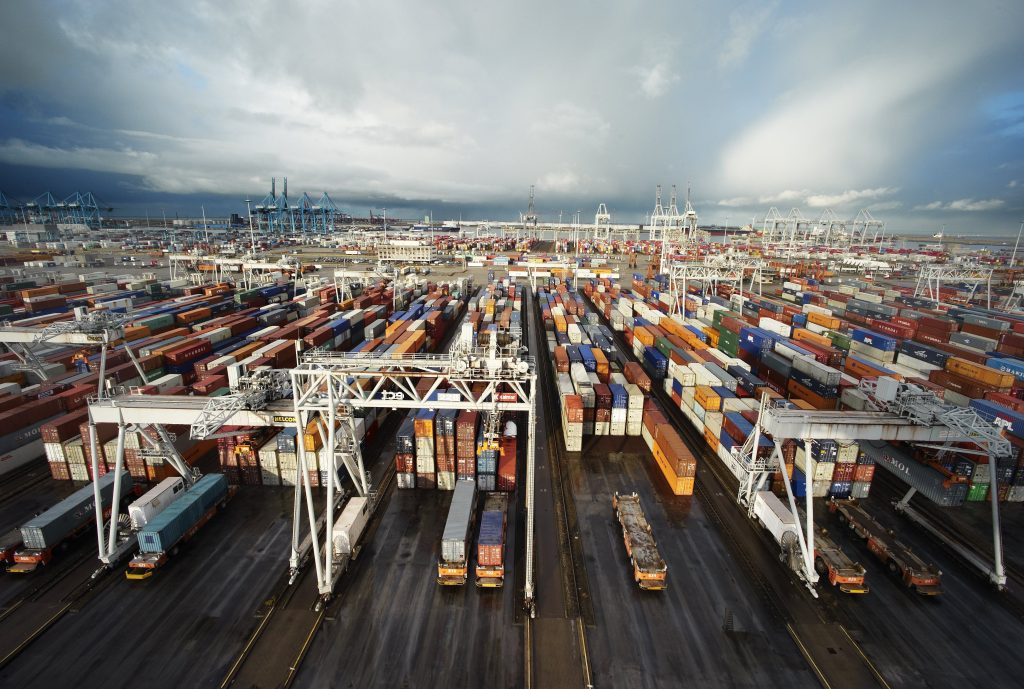
The Port of Rotterdam, located in the Netherlands, is the largest seaport in Europe and one of the world's busiest ports. It serves as a key entry point for goods traveling between Europe and the rest of the world, with extensive connections to global shipping routes.
The Port of Rotterdam’s history dates back to the 14th century, but its major development as a global hub began in the 19th century. The opening of the **Nieuwe Waterweg** (New Waterway) in 1872 was a crucial event, creating a direct link between the port and the North Sea. This allowed larger ships to enter the port and facilitated trade with the rest of the world. In the 20th century, particularly after World War II, the port underwent rapid expansion as global trade grew. Rotterdam became Europe's central port due to its deep-water capacity, modern facilities, and geographic position. By the 1960s, Rotterdam was recognized as the largest port in the world, a title it held until the late 20th century when ports in Asia, such as Shanghai and Singapore, grew larger. However, Rotterdam remains the largest in Europe and a major global trade center.
Container terminals: Rotterdam has several state-of-the-art container terminals equipped with the latest technology, such as the Maasvlakte 2 expansion, which was designed to accommodate the largest container ships in the world. It is also highly automated, using automated guided vehicles (AGVs) and automated cranes to load and unload ships.
Dry bulk terminals: These terminals handle large quantities of raw materials like coal, iron ore, and agricultural products. Rotterdam is one of the primary gateways for dry bulk cargo in Europe.
Liquid bulk terminals: The port is a significant hub for handling liquid bulk cargo, especially oil, chemicals, and liquefied natural gas (LNG). Rotterdam’s oil refineries are among the largest in Europe, and the port plays a crucial role in the energy sector.
Breakbulk terminals: These terminals handle general cargo that is not containerized, such as steel, machinery, and project cargo.
Automotive terminals: Rotterdam is a key European port for the automotive industry, handling vehicle imports and exports.
China, the United States, and Russia are among the top trading partners of the port, reflecting its global reach.
Germany, Belgium, and other European countries are key destinations for goods passing through the port.
Rotterdam is known for its operational efficiency and advanced logistics. The port operates 24/7, and its ability to process large volumes of cargo quickly and smoothly has made it one of the most efficient ports in the world. The use of automation and digital technologies (e.g., real-time tracking systems and AI for logistics optimization) further enhances its operational capabilities.
The Port of Rotterdam is not only a key part of the Dutch economy but also a critical player in the wider European economy. The port:
- Contributes around **€45 billion to the Dutch economy** annually.
- Employs over **385,000 people** directly and indirectly.
- Facilitates **over 465 million tons of cargo** annually, making it the largest in Europe by cargo tonnage.
Rotterdam’s economic significance extends beyond logistics and trade. The **Rotterdam Industrial Complex**, which includes oil refineries, chemical plants, and various manufacturing industries, is closely tied to the port’s operations. It plays a central role in the Dutch and European energy and industrial sectors.
Energy hub: Rotterdam is positioning itself as a leader in the renewable energy sector, particularly in the fields of hydrogen and offshore wind. The port is developing a hydrogen supply chain and infrastructure to serve future energy markets.
Automation and digitalization: The port is a pioneer in the use of **smart technologies**, including the Internet of Things (IoT), artificial intelligence, and blockchain for logistics management. These technologies are expected to play a larger role in future port operations, improving efficiency and security.